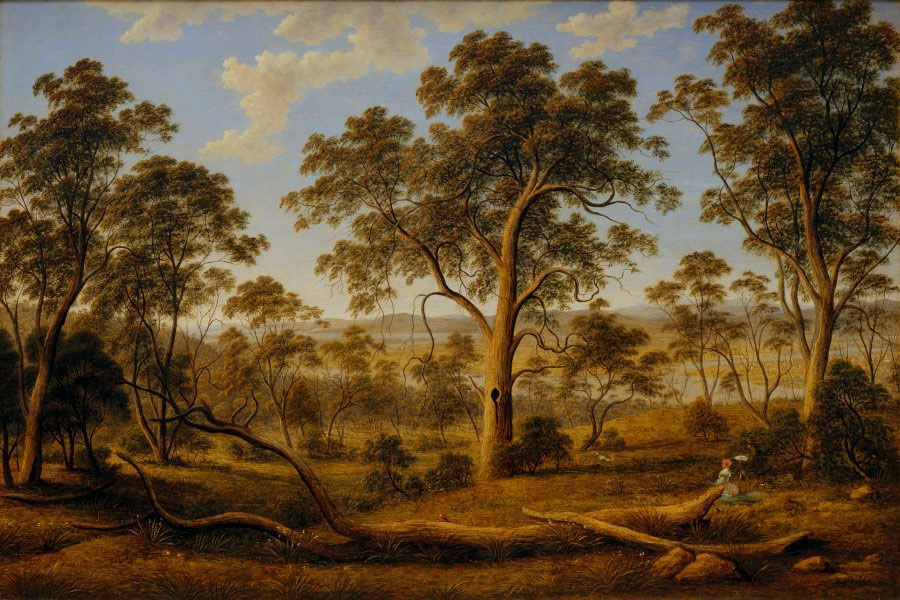Why multiple names for the river?
Many languages use generic names with adjectival qualifiers e.g “Grey Kangaroo” where “Kangaroo” is the basic word for the animal and “grey” is an adjectival qualifier that broadens our understanding of the basic generic word.
Aboriginal languages tend to use separate, multiple terms instead, so that “grey kangaroo” or “pregnant kangaroo” would be distinct words yet in the understanding of the First People it is assumed we are talking about the same creature with different aspects.
Kunermulukerker and Ponrabbel refer to the Tamar in its particular qualities at that part of the river’s reach, as does Lakekella and Pleepertoomeler, but there is no doubt in the mind of the First People that they are still talking about the same estuary and its tributaries.
This is a different way of thinking and conceiving creatures and the landscape which we must enter to understand.

Launceston and the River Tamar – John Glover 1838 Art Gallery of NSW
Read More Envisaging landscape
A Vast Estate Managed with Purpose
In 2011 Bill Gammage published his controversial, The Biggest Estate of Earth: How the Aborigines made Australia. He refuted the idea of Aborigines as nomadic wanderers idling across the landscape. Instead, he saw the Aborigines as landscape managers, modifying and maintaining a vast Estate, a giant “gentleman’s park.”
White intrusion interrupted Indigenous landscape maintenance by fire and mosaic burning which meant an eruption of fire vulnerable regrowth that cause catastrophic bushfires today.
Is there evidence today of the landscape of the First People?
Actually, there is a lot of evidence if we know how to “read” landscape though intense modification of the Launceston basin makes that more difficult at that location.
This scene from the northeast seems simple enough but it tells a complex story.
What does past practice mean in the present?
The substantial alteration to the landscape by First Peoples does not give permission for us to treat the present landscape as a blank slate to be scribbled on.
White intrusion interrupted Indigenous landscape maintenance by fire and mosaic burning which meant an eruption of fire vulnerable regrowth that cause catastrophic bushfires today.
What would the place have looked like without those First People gathered on the shore?
If you had sailed up the Kunermulukerker, the Tamar, in the wake of the first British interlopers what would the landscape have looked like WITHOUT First People presence and occupancy?
Apart from those riverine margins of vegetation or low rainfall eucalypt forest, the land cover would have been a dominant impenetrable rainforest.
